How to Store THCA Smalls for Maximum Freshness and Potency
When you invest in premium THCA flower smalls, proper storage becomes crucial to maintaining their therapeutic value and potency. Understanding how to store THCA smalls effectively can mean the difference between enjoying fresh, potent cannabis for months versus watching your investment degrade within weeks. Poor cannabis storage practices can lead to significant losses in cannabinoid content, terpene profiles, and overall quality.
THCA (tetrahydrocannabinolic acid) is particularly sensitive to environmental factors that can cause degradation. Unlike its decarboxylated counterpart THC, THCA maintains its molecular structure in raw cannabis flower, but this stability depends heavily on proper storage conditions. When exposed to heat, light, air, or improper humidity levels, THCA can convert to THC prematurely or degrade into less desirable compounds, reducing both potency and therapeutic benefits.
The importance of proper THCA freshness cannot be overstated. Fresh THCA smalls retain their full cannabinoid profile, including minor cannabinoids and terpenes that contribute to the entourage effect. These compounds work synergistically to provide enhanced therapeutic benefits, but they're also the most vulnerable to degradation. Terpenes, in particular, are volatile compounds that can evaporate quickly when cannabis isn't stored properly, leading to diminished aroma, flavor, and effects.
Environmental factors that threaten THCA freshness include temperature fluctuations, excessive humidity or overly dry conditions, direct light exposure, and oxygen contact. Each of these factors accelerates different degradation pathways. Heat speeds up chemical reactions that break down cannabinoids, while light provides energy for photodegradation processes. Improper humidity can promote mold growth or cause cannabis to become overly dry and harsh.
Storing cannabis flower requires understanding these degradation mechanisms and implementing storage solutions that address each threat. The goal is creating a stable microenvironment that preserves the delicate balance of cannabinoids, terpenes, and other beneficial compounds. This involves controlling temperature, humidity, light exposure, and air contact while maintaining the structural integrity of the flower.
Professional cultivators and dispensaries have long understood these principles, using specialized equipment and controlled environments to maintain product quality. However, consumers can achieve similar results at home with the right knowledge and tools. The key is implementing a systematic approach that addresses all environmental factors while being practical for everyday use.
Quality cannabis storage also involves understanding the specific characteristics of THCA smalls. These smaller buds often have different surface area to volume ratios compared to larger colas, which can affect how quickly they respond to environmental changes. Smalls may dry out faster due to increased surface exposure, making humidity control even more critical for maintaining optimal texture and potency.
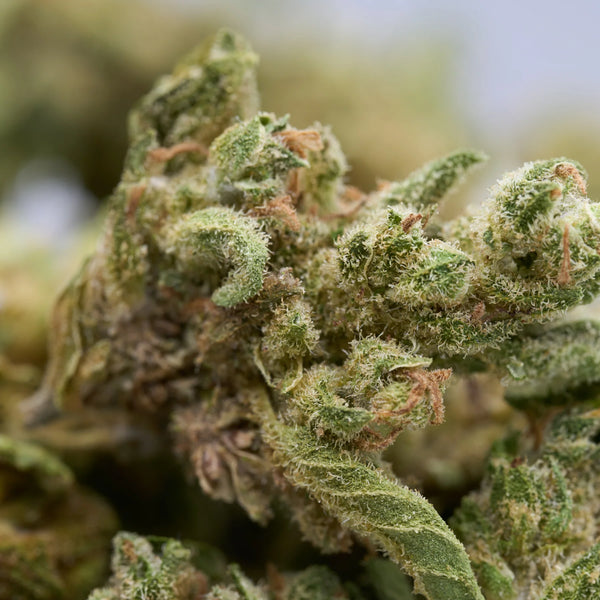
Optimal Storage Conditions for THCA Preservation
Creating the perfect environment for storing cannabis flower requires precise control of several environmental factors. Temperature stands as the most critical variable, with the ideal range falling between 60-68°F (15-20°C). This temperature range slows down the natural degradation processes without being so cold as to make the trichomes brittle. Higher temperatures accelerate the conversion of THCA to THC and promote the breakdown of terpenes, while excessively low temperatures can cause trichomes to become fragile and break off.
THCA humidity control requires maintaining relative humidity (RH) levels between 55-62%. This range prevents mold and mildew growth while keeping the flower from becoming overly dry. Humidity levels above 65% create conditions favorable for mold and bacterial growth, which can completely ruin your cannabis. Conversely, humidity below 50% causes the flower to become brittle, leading to trichome loss and harsh smoke or vapor when consumed.
The relationship between temperature and humidity creates what's known as vapor pressure deficit (VPD), which affects how moisture moves between the cannabis and the surrounding air. Understanding this relationship helps explain why some storage solutions work better than others. When temperature and humidity are properly balanced, cannabis maintains its ideal moisture content, preserving both potency and smoking characteristics.
Light exposure represents another critical factor in THCA freshness preservation. Ultraviolet (UV) radiation provides enough energy to break chemical bonds in cannabinoids and terpenes, leading to degradation. Even visible light can contribute to photodegradation over time. The ideal storage environment should be completely dark or, at minimum, protected from direct light sources. This is why many premium cannabis containers feature opaque walls or UV-filtering materials.
Air circulation and exposure require careful balance. While some air exchange prevents the buildup of harmful gases and moisture, excessive air exposure accelerates oxidation processes that degrade cannabinoids and terpenes. The goal is minimizing air contact while preventing completely stagnant conditions that might promote mold growth. This balance is typically achieved through controlled container environments rather than active air circulation.
Atmospheric pressure changes can also affect cannabis storage, particularly in vacuum-sealed environments. While vacuum sealing can extend storage life by removing oxygen, it can also compress delicate trichomes and alter the flower's structure. Understanding when and how to use vacuum storage requires balancing preservation benefits against potential physical damage to the product.
Seasonal variations in ambient conditions make storage more challenging. Summer heat and humidity require different approaches than winter's dry, heated indoor air. Successful long-term storage often involves adapting storage methods to changing environmental conditions, using tools like humidity packs and temperature monitoring to maintain consistent conditions regardless of seasonal changes.
Professional storage facilities often employ environmental monitoring systems that track temperature, humidity, and other factors continuously. While home storage doesn't require such sophisticated systems, understanding these principles helps consumers make informed decisions about storage methods and tools. The investment in proper storage equipment pays dividends in preserved potency and extended shelf life.
Container Options: Choosing the Right Storage Solution
Selecting appropriate cannabis containers forms the foundation of any effective storage system. Glass jars remain the gold standard for storing cannabis flower, offering several advantages over alternative materials. Borosilicate glass is chemically inert, meaning it won't react with cannabinoids or terpenes, preserving the original chemical profile of your THCA smalls. Glass also provides an excellent barrier against air infiltration while allowing you to visually inspect your cannabis without opening the container.
Mason jars represent the most popular glass storage option, combining affordability with effectiveness. Wide-mouth mason jars provide easy access while maintaining an airtight seal through their two-piece lid system. The rubber gasket creates a reliable barrier against air exchange, while the glass walls prevent chemical interactions. For optimal results, choose jars sized appropriately for your quantity – cannabis should fill roughly 75% of the container volume, leaving space for humidity regulation tools while minimizing air exposure.
Specialized cannabis containers designed specifically for flower storage offer enhanced features beyond basic mason jars. These often include UV-filtering glass that blocks harmful light wavelengths, vacuum pump systems for removing excess air, and integrated humidity monitoring. Some feature modular designs that allow you to separate different strains or portion sizes while maintaining individual environmental controls.
Vacuum-sealed bags provide an alternative for long-term storage, particularly when freezer storage is considered. Food-grade vacuum bags remove oxygen that would otherwise cause oxidation, significantly extending storage life. However, vacuum sealing requires careful technique to avoid compressing delicate trichomes. The process should be gentle, removing air gradually rather than applying maximum suction immediately.
Metal containers, particularly those made from food-grade stainless steel or aluminum, offer excellent protection against light and air infiltration. These containers often feature sophisticated sealing mechanisms and may include humidity control systems. The opaque walls provide complete light protection, while quality construction ensures long-term durability. However, metal containers can be more expensive than glass alternatives and don't allow visual inspection without opening.
Ceramic containers represent another option, offering similar chemical inertness to glass while providing natural insulation properties. High-quality ceramic containers can maintain more stable temperatures than glass, though they're typically opaque, preventing visual inspection. The porous nature of some ceramics requires careful selection to ensure proper air barrier properties.
Plastic containers should generally be avoided for long-term cannabis storage. Most plastics are permeable to air and may contain chemicals that could migrate into the cannabis over time. Additionally, plastic can build up static charges that attract trichomes, leading to potency loss. If plastic must be used, choose food-grade options designed for long-term storage and plan for shorter storage durations.
Multi-container systems allow for organizing different strains or quantities while maintaining optimal storage conditions for each. This approach enables you to access some cannabis without exposing your entire supply to air and light. Consider using a combination of daily-use containers and long-term storage solutions to balance convenience with preservation.
Container preparation plays a crucial role in storage success. New containers should be thoroughly cleaned and dried before use, removing any manufacturing residues that could affect taste or aroma. Glass containers benefit from a vinegar rinse followed by thorough water washing, while specialized containers should be prepared according to manufacturer instructions.
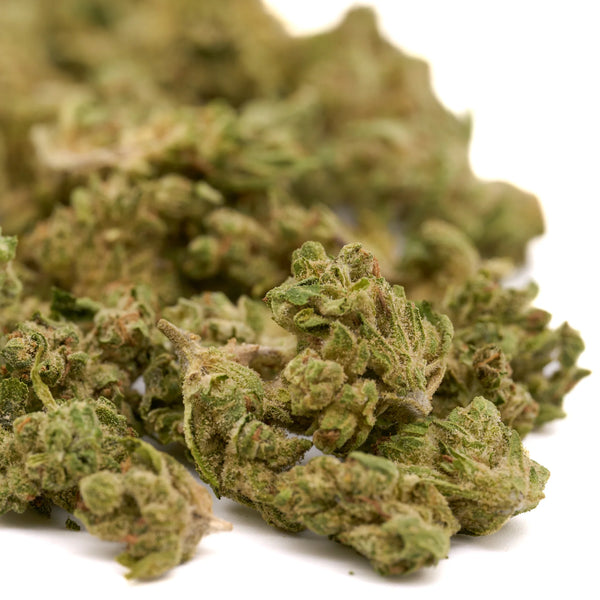
Humidity Control: Maintaining Optimal Moisture Levels
Implementing effective THCA humidity control systems represents one of the most critical aspects of cannabis storage. Boveda packs have revolutionized home cannabis storage by providing precise, two-way humidity regulation. These packs contain a proprietary blend of natural salts and water that automatically maintain specific humidity levels, absorbing excess moisture when humidity is too high and releasing moisture when conditions become too dry.
Choosing the correct Boveda pack requires understanding both the humidity level needed and the size appropriate for your container and cannabis quantity. For THCA freshness, 58% or 62% RH packs work best, with many users preferring 62% for longer-term storage and 58% for cannabis that will be consumed relatively quickly. Pack sizing follows general guidelines: 4-gram packs for up to 15 grams of cannabis, 8-gram packs for up to 30 grams, and larger packs for bulk storage.
Digital humidity meters provide essential monitoring capabilities for serious storage enthusiasts. Calibrated hygrometers allow you to verify that humidity control systems are working correctly and detect problems before they affect cannabis quality. Small, digital hygrometers designed for container use can fit inside storage jars, providing real-time humidity readings. Some advanced models include data logging capabilities, allowing you to track humidity patterns over time.
Alternative humidity control methods include traditional humidification techniques adapted for cannabis storage. Orange peels, lettuce leaves, and damp cotton balls have been used historically, but these organic materials carry mold risks and provide unpredictable humidity levels. Professional-grade humidity control systems used in cigar storage can be adapted for cannabis, offering precise control for serious collectors.
Silica gel packets serve as emergency dehumidification tools when storage environments become too humid. These should only be used temporarily, as they can remove too much moisture if left in contact with cannabis for extended periods. Food-grade silica gel provides the safest option, and packets should be replaced regularly to maintain effectiveness.
Understanding humidity interaction with temperature helps optimize storage conditions. As temperature increases, air can hold more moisture, effectively reducing relative humidity even if absolute moisture content remains constant. This relationship explains why cannabis stored in warm environments may become dry even with humidity control packs present. Conversely, temperature drops can cause relative humidity to spike, potentially creating conditions favorable for mold growth.
Seasonal humidity control requires adapting strategies to changing environmental conditions. Winter heating systems often create very dry indoor air, requiring more aggressive humidification to maintain proper storage conditions. Summer humidity may necessitate stronger dehumidification efforts, particularly in humid climates. Understanding your local climate patterns helps anticipate storage challenges and adjust strategies accordingly.
Container size affects humidity control effectiveness. Larger containers provide more stable humidity environments but require larger humidity control packs. Smaller containers may experience more rapid humidity changes when opened but allow for better portion control. The ratio of cannabis to air space within containers influences how quickly humidity changes occur and how much control is needed.
Humidity control maintenance involves monitoring pack effectiveness and replacing them when exhausted. Boveda packs typically last 2-6 months depending on environmental conditions and container quality. Exhausted packs become rigid and should be replaced promptly to maintain proper humidity levels. Some users maintain spare packs to ensure uninterrupted humidity control.
Light Protection: Preventing UV Damage
Protecting THCA freshness from light damage requires understanding how different wavelengths affect cannabis compounds. Ultraviolet radiation provides sufficient energy to break chemical bonds in cannabinoids and terpenes, leading to degradation that reduces both potency and flavor. While UV radiation poses the greatest threat, visible light can also contribute to degradation over extended exposure periods.
Storage location selection plays a fundamental role in light protection. Dark closets, basement storage areas, and interior rooms without windows provide naturally low-light environments ideal for storing cannabis flower. However, these locations must also meet temperature and humidity requirements, making comprehensive environmental control necessary. Avoid storage areas near windows, heat sources, or frequently lit spaces.
UV-filtering glass containers offer an elegant solution for light protection while maintaining visibility for inspection. These specialized glasses filter out harmful UV wavelengths while allowing visible light to pass through. The amber or dark-colored glass commonly used in pharmaceutical and beer bottles provides excellent UV protection and can be repurposed for cannabis storage if properly cleaned and fitted with airtight seals.
Opaque containers provide complete light protection but sacrifice the ability to visually inspect cannabis without opening the container. Metal tins, ceramic jars, and specially designed opaque cannabis containers eliminate all light exposure. For users who prioritize maximum protection over convenience, opaque storage represents the ultimate light barrier. However, this approach requires more careful monitoring since you can't see the cannabis condition without exposure to air and light.
Light-proof storage bags offer portable protection for travel or temporary storage. These bags typically feature multiple layers of light-blocking materials and may include moisture barriers. While not suitable for long-term storage due to potential air permeability, they provide excellent short-term protection and can supplement primary storage containers during transport.
DIY light protection methods can be effective and economical. Wrapping glass containers in aluminum foil, storing them in opaque boxes, or using light-blocking sleeves can provide excellent protection. These methods work particularly well when combined with other storage best practices. However, ensure that any additional materials don't trap moisture or create other environmental problems.
Understanding light sources in storage areas helps identify potential threats. LED lights emit less heat than traditional bulbs but can still contribute to degradation with prolonged exposure. Fluorescent lights contain UV emissions that can be particularly harmful. Even reflected sunlight from windows or bright surfaces can accumulate over time to cause noticeable degradation.
Photography and inspection lighting require special consideration. While occasional brief exposure to light for inspection or photography won't cause significant damage, repeated or prolonged exposure can accumulate. Use minimal lighting when possible, and consider red lights, which provide visibility while being less harmful to cannabis compounds than white or blue light.
Light protection verification can be achieved through simple tests. UV-sensitive materials or papers can indicate whether storage containers effectively block harmful radiation. These tests help verify that storage solutions provide adequate protection before trusting them with valuable cannabis supplies.
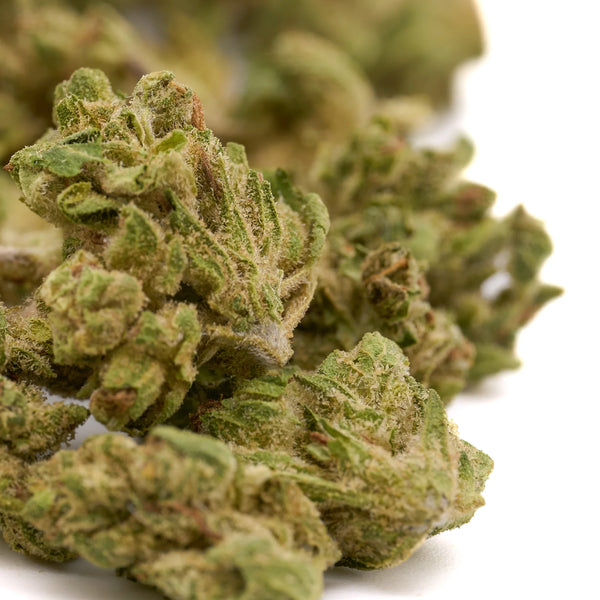
Air Exposure: Minimizing Oxidation
Controlling air exposure represents a critical factor in preserving THCA potency over time. Oxygen serves as a primary catalyst for cannabinoid and terpene degradation through oxidation reactions. These processes convert beneficial compounds into less desirable byproducts, reducing both therapeutic value and sensory appeal. Effective cannabis storage tips always emphasize minimizing air contact while maintaining practical access to stored material.
Airtight sealing technologies form the foundation of oxidation prevention. Quality mason jar lids create reliable seals when properly applied, with the rubber gasket forming a barrier against air infiltration. Testing seal effectiveness involves pressing down on the lid center – a properly sealed jar will not flex or move. For enhanced sealing, some users apply food-grade silicone around lid edges, though this typically isn't necessary with quality jars.
Vacuum sealing equipment removes oxygen from storage environments, significantly extending THCA freshness. Home vacuum sealers designed for food storage work well for cannabis, though technique matters significantly. Gentle vacuum application prevents trichome damage while removing harmful oxygen. Pulse vacuum settings allow for controlled air removal, stopping before compression becomes excessive. Double-bagging provides additional insurance against seal failure.
Nitrogen flushing represents a professional-grade approach to oxygen removal. This technique involves displacing oxygen with nitrogen gas before sealing containers. While nitrogen flushing equipment requires significant investment, the results can extend storage life substantially. Some commercial cannabis processors use this technique for long-term storage of premium products. Home users can achieve similar results with smaller nitrogen setups designed for wine preservation.
Container filling techniques affect air exposure significantly. Cannabis should fill approximately 75% of container volume, leaving minimal air space while allowing room for humidity control packs. Overpacking containers can damage delicate flowers, while excessive air space increases oxidation risks. Finding the right balance requires consideration of both preservation and flower integrity.
Opening frequency and technique impact air exposure accumulation. Each container opening introduces fresh oxygen and allows terpene escape. Minimizing opening frequency through portion control helps reduce total air exposure. When accessing stored cannabis, work quickly and avoid unnecessary air exchange. Consider using smaller containers for daily use while keeping bulk storage sealed.
Oxygen absorber packets provide chemical oxygen removal for ultra-long-term storage. These packets contain iron powder that chemically binds with oxygen, removing it from sealed environments. Unlike vacuum sealing, oxygen absorbers don't compress cannabis but can remove moisture along with oxygen. They work best in combination with moisture barriers and should be sized appropriately for container volume.
Air quality considerations extend beyond simple oxygen content. Storage areas with high pollution, strong odors, or chemical vapors can contaminate cannabis even in sealed containers if seals aren't perfect. Clean storage environments reduce contamination risks and help maintain the natural aroma and flavor profiles of stored cannabis.
Long-term vs Short-term Storage Strategies
Developing effective storage strategies requires understanding the different requirements for short-term daily use versus long-term preservation. Cannabis storage tips must address both scenarios since most users maintain supplies for immediate consumption while preserving larger quantities for future use. The approaches differ significantly in terms of container selection, environmental control, and access frequency.
Short-term storage focuses on maintaining THCA freshness for consumption within 1-3 months. These systems prioritize convenient access while providing adequate preservation. Smaller glass jars work well for daily-use quantities, typically storing 3.5-14 grams of cannabis. These containers should be easy to open and close repeatedly without compromising seal integrity. Wide-mouth jars facilitate access while maintaining airtight seals between uses.
Daily-use storage benefits from 62% humidity control packs, which maintain optimal moisture for consumption while being forgiving of frequent container openings. The slightly higher humidity prevents cannabis from becoming overly dry between uses while still maintaining good combustion or vaporization characteristics. Temperature control remains important but is less critical for short-term storage since degradation processes occur slowly.
Long-term storage requires more aggressive preservation measures to maintain THCA freshness over 6-12 months or longer. These systems minimize environmental stresses through enhanced container technology, stricter environmental control, and reduced access frequency. Vacuum sealing or nitrogen displacement becomes more valuable for extended storage periods, significantly slowing oxidation processes.
Extended storage often benefits from 58% humidity levels, which provide better mold prevention over long periods while maintaining adequate moisture content. The lower humidity reduces risks associated with temperature fluctuations that might temporarily spike relative humidity levels. This conservative approach provides insurance against storage failures that could ruin large quantities of cannabis.
Freezer storage represents the ultimate long-term preservation method, though it requires specific techniques to prevent damage. Storing cannabis flower in freezers can extend viable storage life to years when done correctly. However, frozen cannabis becomes brittle, making careful handling essential. Double-bagging in vacuum-sealed containers prevents moisture infiltration while protecting against physical damage.
Rotation systems help ensure that stored cannabis gets used before degradation becomes noticeable. First-in-first-out (FIFO) inventory management prevents old stock from sitting unused while fresh material gets consumed. Dating storage containers helps track storage duration and prioritize consumption accordingly. This approach works particularly well for users who purchase THCA flower smalls in larger quantities.
Transitioning between storage systems allows for optimized preservation throughout the cannabis lifecycle. Newly acquired cannabis might start in vacuum-sealed long-term storage, move to standard airtight containers for medium-term storage, and finally to convenient daily-use containers. This system maximizes preservation while maintaining practical access as storage duration decreases.
Climate considerations affect storage strategy selection. Humid climates require more aggressive dehumidification for long-term storage, while dry climates need enhanced humidity control. Seasonal storage adjustments help maintain optimal conditions year-round. Understanding local climate patterns enables proactive storage management that prevents preservation problems before they occur.

Common Storage Mistakes That Ruin Cannabis Quality
Understanding frequent storage errors helps prevent costly mistakes that can destroy valuable cannabis supplies. The most common mistake involves improper humidity control, either allowing cannabis to become too dry or creating conditions that promote mold growth. THCA humidity levels outside the 55-65% range quickly lead to quality degradation, with effects becoming noticeable within days under extreme conditions.
Refrigerator storage represents a widespread misconception about proper cannabis storage. While refrigeration provides cool temperatures, the constantly changing humidity levels and potential for moisture condensation create serious problems. Refrigerator air is typically too dry, causing cannabis to become brittle and lose trichomes. Additionally, frequent temperature changes when opening refrigerator doors can cause condensation that promotes mold growth.
Light exposure mistakes occur when users prioritize convenience over preservation. Storing cannabis in clear containers on shelves or counters exposes it to continuous light damage. Even indirect light accumulates over time to cause noticeable degradation in cannabinoid content and terpene profiles. Transparent storage might seem practical for identification, but it sacrifices THCA freshness for minimal convenience gains.
Overpacking containers damages delicate flower structure while creating uneven environmental conditions within storage spaces. Compressed cannabis develops flat spots where trichomes are damaged, leading to potency loss in those areas. Additionally, tightly packed containers prevent proper air circulation around humidity control packs, creating moisture gradients that can promote localized mold growth.
Temperature fluctuation damage occurs when storage locations experience regular heating and cooling cycles. Basements near furnaces, attics, or areas with direct sunlight exposure create thermal stress that accelerates degradation processes. Each temperature cycle causes expansion and contraction that can damage trichomes and cellular structures within cannabis flowers.
Cross-contamination between strains represents both a quality and identification problem. Using the same containers for different strains without proper cleaning mixes flavors and aromas, creating confusion and diminishing the unique characteristics of individual varieties. Dedicated containers for each strain preserve distinct profiles while preventing accidental mixing of different potency levels.
Ignoring container sealing quality leads to gradual air infiltration that causes slow but continuous degradation. Worn rubber gaskets, damaged jar rims, or improperly applied lids allow air exchange that oxidizes cannabinoids and evaporates terpenes. Regular seal inspection and maintenance prevents these gradual losses that might not be noticed until significant degradation has occurred.
Humidity pack neglect represents a common maintenance oversight. Exhausted humidity control packs not only fail to regulate moisture but can actually absorb moisture from cannabis, causing it to become overly dry. Regular monitoring and replacement of humidity packs ensures continuous protection throughout storage periods.
Poor storage location selection compromises even the best container and humidity control systems. Areas with temperature swings, high ambient humidity, strong odors, or potential contamination sources create challenges that proper equipment can't always overcome. Choosing stable, clean, dark environments provides the foundation for successful storage systems.
Freezer Storage: Benefits and Considerations
Freezer storage offers the ultimate preservation method for long-term cannabis storage, capable of maintaining THCA freshness for years when implemented correctly. Subfreezing temperatures dramatically slow all chemical and biological processes that cause degradation, effectively pausing the aging process. However, frozen cannabis requires specific handling techniques to prevent physical damage and maintain quality upon thawing.
Preparation for freezer storage begins with proper moisture content adjustment. Cannabis should be dried to optimal levels before freezing, typically achieving 10-15% moisture content. Excessive moisture creates ice crystals that can rupture cell walls and damage trichomes, while overly dry cannabis becomes brittle and prone to mechanical damage. Professional moisture meters help verify ideal moisture levels before freezing.
Double-bagging techniques provide essential protection against moisture infiltration and physical damage during freezer storage. The first layer consists of vacuum-sealed food-grade bags that remove air and provide moisture barriers. The second layer uses freezer-safe containers or bags that protect against punctures and provide additional insulation. This system prevents freezer burn and maintains cannabis integrity throughout storage periods.
Temperature stability within freezers affects storage quality significantly. Chest freezers typically provide more stable temperatures than upright models, reducing thermal cycling that can cause expansion and contraction damage. Avoiding frost-free freezers prevents the defrost cycles that create temperature fluctuations harmful to storing cannabis flower. Dedicated freezers used solely for cannabis storage eliminate contamination risks from food items.
Thawing procedures require careful attention to prevent condensation damage. Frozen cannabis should be allowed to reach room temperature gradually while remaining in sealed containers. This prevents moisture condensation on cold cannabis surfaces that could promote mold growth or damage trichomes. The thawing process typically requires 2-4 hours depending on container size and ambient temperature.
Handling frozen cannabis demands gentleness to prevent trichome damage. Frozen trichomes become extremely brittle and can shatter with minimal impact. Any manipulation of frozen cannabis should be minimal and gentle. Many users portion cannabis before freezing to avoid repeatedly handling frozen material, reducing total damage from temperature cycling and physical contact.
Freezer organization systems help maintain storage quality while providing access control. Clear labeling with strain names and storage dates prevents confusion and ensures proper rotation. Storage containers should be sized appropriately to minimize air space while preventing overpacking. Vacuum-sealed portions can be organized in larger containers that provide additional protection and organization.
Quality verification after freezer storage helps determine whether the process succeeded in preserving cannabis characteristics. Well-preserved frozen cannabis should maintain its original color, aroma, and trichome coverage after proper thawing. Significant color changes, loss of smell, or reduced trichome visibility indicate storage problems that should be addressed for future freezing attempts.
Partial access strategies allow users to benefit from freezer storage while maintaining convenient access to portions of their supply. Dividing large quantities into smaller portions before freezing enables access to specific amounts without exposing the entire supply to temperature cycling. This approach maximizes preservation benefits while maintaining practical usability.
Quality Monitoring: Recognizing Storage Success and Failure
Effective monitoring systems help ensure that storage methods successfully preserve THCA potency over time. Visual inspection provides the first line of quality assessment, with healthy stored cannabis maintaining its original color, trichome coverage, and structural integrity. Fresh cannabis should display vibrant colors appropriate to the strain, whether green, purple, orange, or other natural hues. Significant color fading, browning, or yellowing indicates degradation from light exposure, excessive heat, or oxidation.
Trichome assessment reveals crucial information about storage effectiveness. Well-preserved cannabis maintains abundant, intact trichomes that appear as crystal-like structures covering flower surfaces. Magnification tools like jewelry loupes or digital microscopes enable detailed trichome inspection. Healthy trichomes should appear clear to cloudy white, depending on the strain and harvest timing. Brown, amber, or missing trichomes suggest degradation from heat, light, or mechanical damage.
Aroma evaluation provides sensitive indicators of THCA freshness and proper storage. Fresh cannabis should maintain strong, strain-specific aromas that reflect its terpene profile. Diminished smell intensity suggests terpene loss from air exposure, improper humidity, or temperature abuse. Off-odors including musty, hay-like, or ammonia scents indicate storage problems ranging from over-drying to mold development. Complete aroma loss typically indicates severe degradation that may have compromised cannabinoid content as well.
Texture assessment reveals moisture content and structural integrity maintenance. Properly stored cannabis should feel slightly springy when gently squeezed, indicating optimal moisture content. Overly dry cannabis feels brittle and may crumble when handled, while excessively moist cannabis feels spongy or leaves moisture on fingers. Ideal texture allows for easy grinding without turning to powder or forming clumps.
Mold and contamination detection requires careful inspection of all flower surfaces, particularly in dense bud areas where air circulation is limited. Mold typically appears as fuzzy growth that may be white, gray, green, or black. Unlike trichomes, mold has a distinct fuzzy appearance and may have colored spores. Any suspected mold contamination requires immediate isolation and disposal of affected material to prevent spread to other stored cannabis.
Documentation systems help track storage performance over time and identify successful strategies. Recording storage dates, environmental conditions, and quality observations creates valuable data for optimizing storage methods. Digital photos can document visual changes over time, while written notes capture aroma and texture changes that photos can't convey. This documentation proves invaluable for improving future storage attempts.
Testing degradation through consumption provides ultimate quality verification, though this should be done cautiously with any questionable material. Fresh, properly stored cannabis should provide the expected effects, flavor, and smoothness when consumed. Harsh smoke or vapor, reduced potency, or off-flavors indicate storage problems that may have compromised safety or quality.
Environmental monitoring of storage areas helps identify potential problems before they affect cannabis quality. Temperature and humidity logging reveals patterns that might threaten stored materials. Sudden spikes in either parameter can indicate equipment failures or environmental changes that require immediate attention. Understanding these patterns enables proactive adjustments that prevent quality loss.
Preventive monitoring schedules ensure regular quality assessment without excessive cannabis exposure to air and light. Monthly visual inspections provide adequate monitoring for most storage situations, while longer-term storage might require less frequent but more thorough assessments. Balancing monitoring frequency with preservation needs helps maintain quality while gathering necessary information about storage effectiveness.
Conclusion: Building Your Perfect THCA Storage System
Creating an effective system for how to store THCA smalls requires combining the right equipment, techniques, and monitoring practices into a cohesive preservation strategy. The investment in proper cannabis storage pays dividends in maintained potency, preserved flavor profiles, and extended usable life of your cannabis supplies. Whether you're storing small quantities for personal use or larger amounts for long-term preservation, the principles remain consistent: control temperature, humidity, light exposure, and air contact while monitoring quality over time.
The foundation of any successful storage system starts with quality cannabis containers that provide airtight seals and appropriate environmental protection. Glass jars remain the gold standard for most applications, offering chemical inertness, visibility for inspection, and reliable sealing properties. Supplementing containers with humidity control packs creates the stable moisture environment essential for THCA freshness, while proper storage location selection ensures stable temperatures and protection from light damage.
Understanding the relationship between storage duration and required preservation intensity helps optimize your approach. Short-term storage for daily use requires convenient access and basic environmental protection, while long-term preservation demands more aggressive techniques including vacuum sealing, enhanced humidity control, and possibly freezer storage. Developing different strategies for different storage needs maximizes both preservation and practicality.
The most successful storage systems incorporate monitoring and maintenance routines that catch problems early and ensure continued effectiveness. Regular quality assessments, humidity pack replacement, and environmental monitoring create feedback loops that continuously improve storage outcomes. This proactive approach prevents costly losses while building experience that improves future storage attempts.
Investment in quality storage equipment represents a cost-effective approach to cannabis preservation. The price of proper containers, humidity control, and monitoring equipment quickly pays for itself through prevented losses and extended storage life. When you consider the value of premium THCA flower smalls, proper storage becomes an obvious investment in protecting that value over time.
Avoiding common storage mistakes prevents the frustration and loss associated with degraded cannabis. Understanding the science behind preservation helps make informed decisions about storage methods while avoiding marketing gimmicks that don't provide real benefits. Focus on proven techniques that address the fundamental threats to cannabis quality: heat, light, air, and improper humidity.
Building storage expertise takes time and experimentation to find the methods that work best for your specific needs and environment. Start with basic proven techniques and gradually incorporate more advanced methods as you gain experience and identify specific challenges in your storage environment. Document your results to build a knowledge base that improves over time.
The ultimate goal of any cannabis storage tips system is maintaining the quality and potency that made you choose those specific THCA smalls initially. Proper storage preserves not just the chemical compounds but also the sensory experience that makes quality cannabis enjoyable. By implementing comprehensive storage strategies that address all degradation factors, you ensure that your investment in premium cannabis products provides maximum value and satisfaction throughout their storage life.
Remember that storage is an ongoing process rather than a one-time setup. Environmental conditions change seasonally, equipment requires maintenance, and storage needs evolve as consumption patterns change. Successful long-term storage requires adapting methods to changing conditions while maintaining the core principles that preserve THCA freshness and potency. With proper planning, equipment, and technique, you can maintain cannabis quality for months or even years, maximizing both the therapeutic value and enjoyment of your carefully selected THCA smalls.

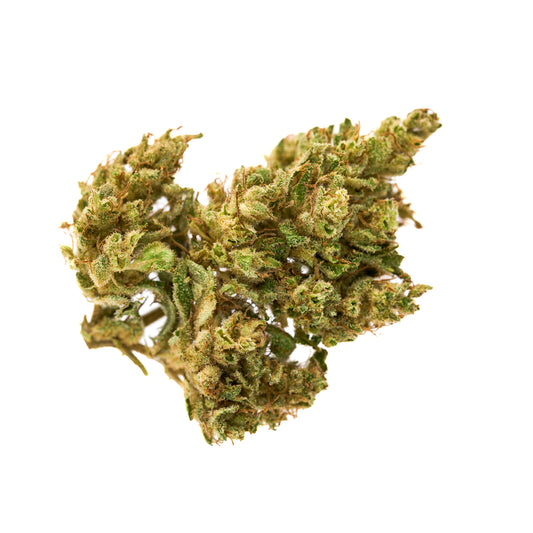
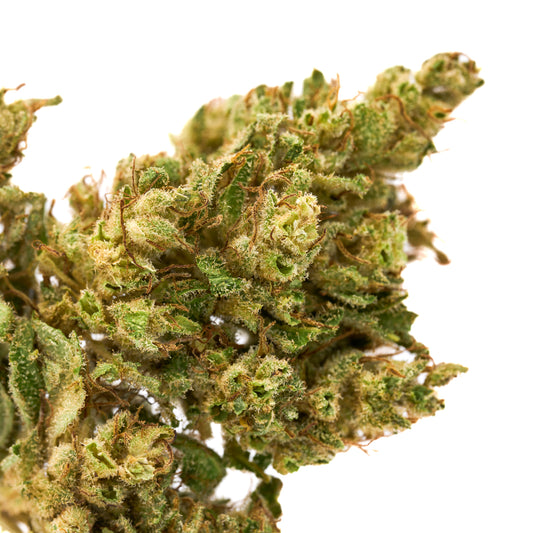
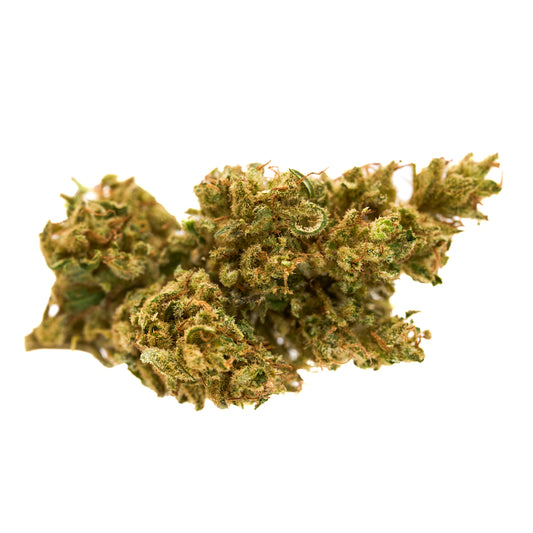
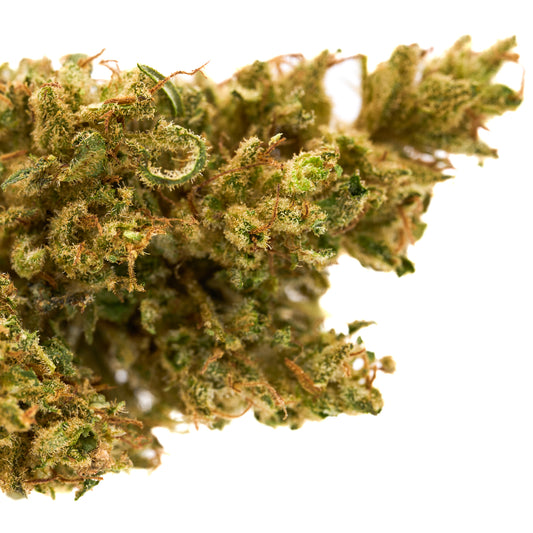
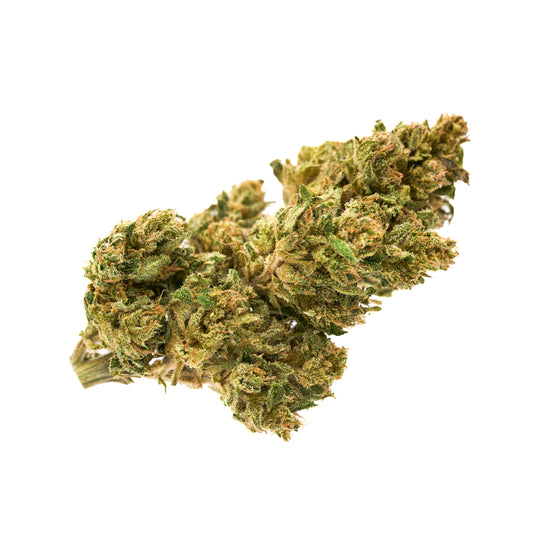
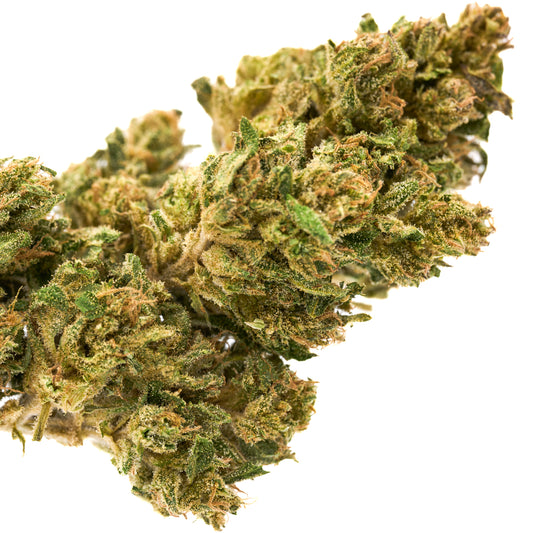



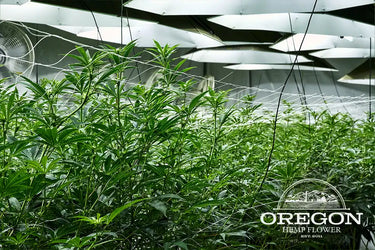

Leave a comment
Please note, comments need to be approved before they are published.